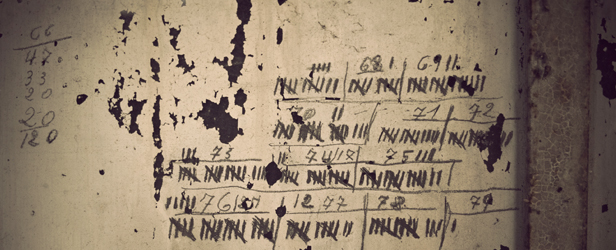
elitefts™ Sunday Edition
I have just been re-reading some older training articles, and I thought I would apply the principles to my standard three-week loading cycle for strength and power. The articles were:
How to Design Strength Training Programs using Prilepin's Table by Hristo Hristov
The Regulation of Training by Louie
The Importance of Volume by Louie
I am a huge fan of wave loading when it comes to strength gains and have often used double days as well, training the same movement patterns with different exercises during both workouts. These workouts are usually separated by at least six hours and usually take place 8 to 10 hours after the first workout of the day.
I prefer to use slightly lighter, higher velocity movements in the first workout and then heavier (termed by mechanical advantage) and slower movements during the second workout. Positioning of the movements, either in the morning or in the evening, will depend on what you are trying to achieve. Rather than following my lead, you may wish to target your weaker movements at the start of your day. Therefore, there is a great deal of variety, allowing you to choose what works best with your playing group. With all movements, however, I encourage players to use as fast of a concentric movement as possible whilst returning the bar in a slower controlled eccentric movement. To this end, I never use tempo or time under tension guidelines in my players' programs. My overriding philosophy is the "Big is a by-product of Strong."
My standard three-week loading cycle for an off-season training plan involves two waves of a basic step-loaded training session, decreasing reps each week. It looks like this:
Week 1: 2 x (6 @ 75%, 5 @ 80%, 4 @ 85%)
Week 2: 2 x (5 @ 80%, 4 @ 85%, 3 @ 90%)
Week 3: 2 x (4 @ 85%, 3 @ 90%, 2 @ 95%)
If using a loading cycle with only a negligible increase in load for the second wave (so that only a minor percentage increase occurs, for the sake of this article), you would get a descending volume of 30 to 24 to 18 over the three-week cycle and an increasing INOL (from Hristov) of 1.51 to 1.63 to 1.93 over the same period. These numbers fit nicely into the 1 – 2 zone that Hristov says is, “tough, but good for loading phases.”
I have used this with members of my current playing group who are in need of strength and power gains.
|
Training Day |
AM |
PM |
|
Monday |
Power Snatch Front Squat |
Back Squat Romanian DeadLift |
|
Tuesday |
Incline Bench Press Weighted Chins |
Bench Press Pendlay Row |
|
Wednesday |
OFF |
OFF |
|
Thursday |
Power Clean Front Squat |
Back Squat Good Morning |
|
Friday |
Push Press High Pulls off High Blocks |
Military Press Weighted Chins (Grip Change) |
|
Weekend |
OFF |
OFF |
The plan above can be trained using either straight sets or a modified superset (MSS) style of training. For all lower body movements, I will use straight sets. However, with the upper body, I have found that I get much better results using the MSS style of training. This will involve a one-minute rest between exercises in the superset and a two-minute rest between the couplets. Also, when using wave loading, I like to have a three-minute rest at the completion of each wave.
As you can see, this program is an intense, large muscle group compound-exercise plan. However, it only lasts for a short intensification block of three weeks before shifting focus toward a different style of program and/or change of exercises. Optimal recovery is paramount for the success of this program, along with close attention to pre-, peri-, and post-training nutrition/supplementation. Also, it is important to remember that this is a strength program designed in a rugby setting, so players will have speed, skill, and fitness work in the day-to-day weekly off-season plan as well.











2 Comments